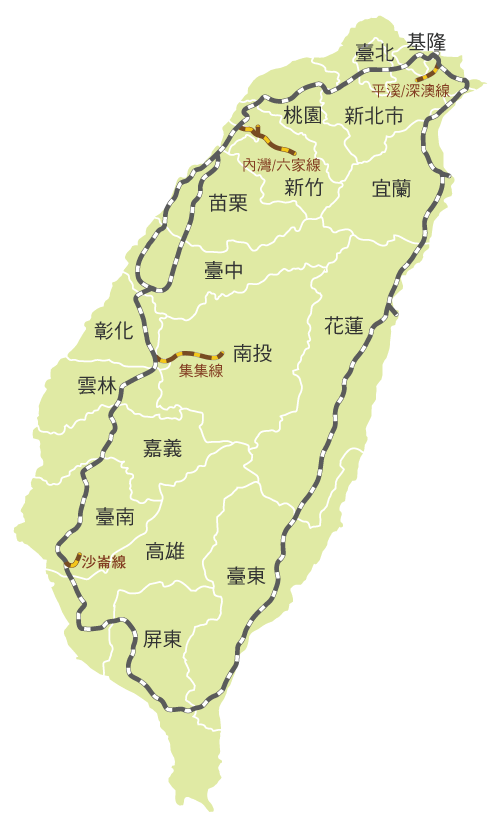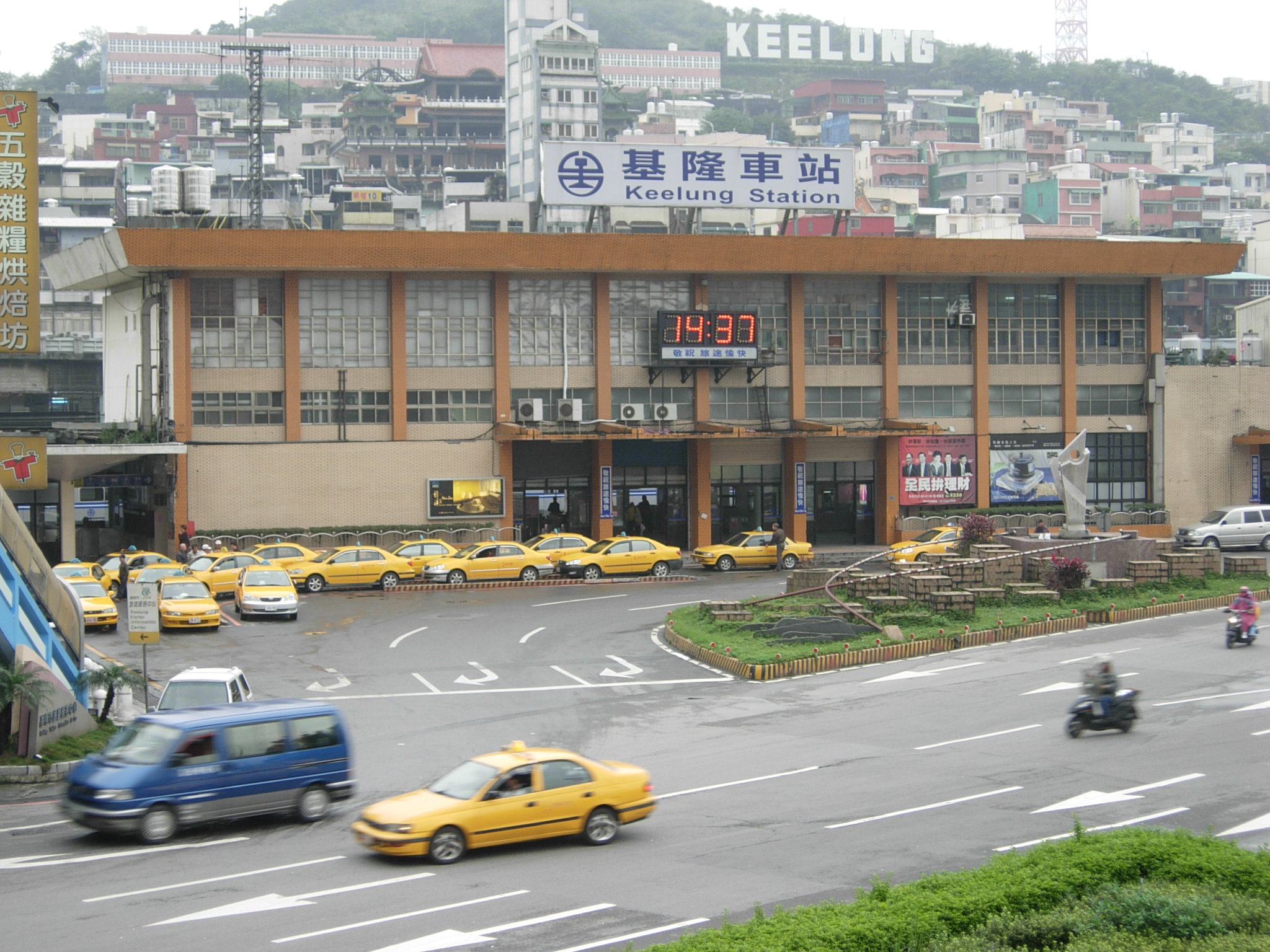|
Jingwu Railway Station
Jingwu () is a railway station in Taichung, Taiwan served by Taiwan Railways. It opened in October 2018 following a delay from March 2017. Location Jingwu Station is located in the East District of Taichung City, at the intersection of Nanjing E Road and Fugui Road. It is close to the Taichung Confucius Temple, Taichung Stadium, and Taichung Baseball Field. See also * List of railway stations in Taiwan There are currently six operating railway systems in Taiwan: The two Inter-city rail systems, Taiwan Railways and Taiwan High Speed Rail, have several overlaps in station names. See below ''Taiwan High Speed Rail'' section for their relations in ... References Railway stations in Taichung Railway stations served by Taiwan Railways Administration Railway stations in Taiwan opened in 2018 {{Taiwan-railstation-stub ... [...More Info...] [...Related Items...] OR: [Wikipedia] [Google] [Baidu] |
Taiwan Railways Administration
Taiwan Railways Administration (TRA) is a railway operator in Taiwan. It is an agency of the Ministry of Transportation and Communications, responsible for managing, maintaining, and running conventional passenger and freight railway services on 1097 km of track in Taiwan. Since Taiwan is heavily urbanised with a high population density, railways have played an important part in domestic transportation since the late 19th century. Passenger traffic in 2018 was 231,267,955. The agency's headquarters are in Zhongzheng District, Taipei. Overview Railway services between Keelung and Hsinchu began in 1891 under China's Qing dynasty. Because the railway was completely rebuilt and substantially expanded under the operated by Formosa's Japanese colonial government (1895–1945), the network's Japanese influence and heritage persists. Similarities between the TRA and the Japan Railways (JR) companies can be noted in signal aspects, signage, track layout, fare controls, sta ... [...More Info...] [...Related Items...] OR: [Wikipedia] [Google] [Baidu] |
Public Transport Bus Service
Public transport bus services are generally based on regular operation of transit buses along a route calling at agreed bus stops according to a published public transport timetable. History of buses Origins While there are indications of experiments with public transport in Paris as early as 1662, there is evidence of a scheduled "bus route" from Market Street in Manchester to Pendleton in Salford UK, started by John Greenwood in 1824. Another claim for the first public transport system for general use originated in Nantes, France, in 1826. Stanislas Baudry, a retired army officer who had built public baths using the surplus heat from his flour mill on the city's edge, set up a short route between the center of town and his baths. The service started on the Place du Commerce, outside the hat shop of a M. Omnès, who displayed the motto ''Omnès Omnibus'' (Latin for "everything for everybody" or "all for all") on his shopfront. When Baudry discovered that passengers ... [...More Info...] [...Related Items...] OR: [Wikipedia] [Google] [Baidu] |
East District, Taichung
East District () is an urban district in Taichung, Taiwan. It was a part of Taichung City before the City and County were merged in 2010. History The district used to be part of the Taichung provincial city before the merger with Taichung County to form the Taichung special municipality on 25 December 2010. Administrative divisions East District is divided into 17 villages, which are: Xinzhuang, Zhenxing, Tungqiao, Tungxing, Quanyuan, Gancheng, Hanxi, Lecheng, Tungmen, Shijia, Tungying, Tungnan, Tungshi, Gezuo, Furen, Futai and Tungxin. Tourist attractions * Hanxi Night Market * Dongguang Green Tunnel (東光錄園道) * Lecheng Temple * Lin Family Ancestral Shrine * Zhang Liao Family Temple Transportation The district is served the Jingwu and Taichung stations of the Taiwan Railways Administration. See also * Taichung Taichung (, Wade–Giles: ''Tʻai²-chung¹'', pinyin: ''Táizhōng''), officially Taichung City, is a special municipality located in central Ta ... [...More Info...] [...Related Items...] OR: [Wikipedia] [Google] [Baidu] |
Taichung
Taichung (, Wade–Giles: ''Tʻai²-chung¹'', pinyin: ''Táizhōng''), officially Taichung City, is a special municipality located in central Taiwan. Taichung has approximately 2.8 million residents and is the second most populous city of Taiwan, as well as the most populous city in Central Taiwan. It serves as the core of the Taichung–Changhua metropolitan area, the second largest metropolitan area in Taiwan. Located in the Taichung Basin, the city was initially developed from several scattered hamlets helmed by the Taiwanese indigenous peoples. It was constructed to be the new capital of Taiwan Province and renamed as " Taiwan-fu" in the late Qing dynastic era between 1887 and 1894. During the Japanese era from 1895, the urban planning of present-day city of Taichung was performed and developed by the Japanese. From the start of ROC rule in 1945, the urban area of Taichung was organized as a provincial city up until 25 December 2010, when the original provincial city and ... [...More Info...] [...Related Items...] OR: [Wikipedia] [Google] [Baidu] |
Keelung Railway Station
Keelung Station () is a railway station in Ren'ai District, Keelung, Taiwan served by Taiwan Railways. The station was built in 1891, and has gone through several renovations. Overview The station has three stories (two aboveground, one underground). Platform layout History *1891-10-20: A station to the north of the current station was opened (Keelung Train Pier, ) when the railroad segment from Keelung to Tsui-tng-ka Pier was completed. *1893-10-20: The rail line from Keelung to Taipeh (Taipei) was completed. *1908-10-30: The third-generation station (with clock tower) was opened for service. The style is similar to Hsinchu and Taichung stations, which opened at around the same time. *April 1914: The rail line from Keelung to '' Haccho'' was completed. *1967-01-23: The fourth-generation station was completed. *1968: Station underpass was completed. *1968-04-05: The Keelung Railway Restaurant was added to the station. *1985-06-06: The aforementioned restaurant closed. *201 ... [...More Info...] [...Related Items...] OR: [Wikipedia] [Google] [Baidu] |
List Of Railway Stations In Taiwan
There are currently six operating railway systems in Taiwan: The two Inter-city rail systems, Taiwan Railways and Taiwan High Speed Rail, have several overlaps in station names. See below ''Taiwan High Speed Rail'' section for their relations in detail. There are five rapid transit systems in Taiwan: * Taipei Metro, opened in March 1996, serves the core of Taipei–Keelung metropolitan area. * Kaohsiung Metro, opened in March 2008, serves the core of Kaohsiung metropolitan area. * Taoyuan Metro, opened in March 2017, connects the cores of Taipei and Taoyuan with Taoyuan International Airport. * New Taipei Metro, opened in December 2018, serves the Danhai New Town. * Taichung Metro, opened in April 2021, serves the core of Taichung–Changhua metropolitan area. The Alishan Forest Railway is currently administered by Forestry Bureau as a heritage railway for tourists in Alishan National Scenic Area. File:ROC Taiwan Railways Administration Logo.svg, Taiwan Railways File:Taiwa ... [...More Info...] [...Related Items...] OR: [Wikipedia] [Google] [Baidu] |
Railway Stations In Taichung
Rail transport (also known as train transport) is a means of transport that transfers passengers and goods on wheeled vehicles running on rails, which are incorporated in tracks. In contrast to road transport, where the vehicles run on a prepared flat surface, rail vehicles (rolling stock) are directionally guided by the tracks on which they run. Tracks usually consist of steel rails, installed on sleepers (ties) set in ballast, on which the rolling stock, usually fitted with metal wheels, moves. Other variations are also possible, such as "slab track", in which the rails are fastened to a concrete foundation resting on a prepared subsurface. Rolling stock in a rail transport system generally encounters lower frictional resistance than rubber-tyred road vehicles, so passenger and freight cars (carriages and wagons) can be coupled into longer trains. The operation is carried out by a railway company, providing transport between train stations or freight customer facili ... [...More Info...] [...Related Items...] OR: [Wikipedia] [Google] [Baidu] |
Railway Stations Served By Taiwan Railways Administration
Rail transport (also known as train transport) is a means of transport that transfers passengers and goods on wheeled vehicles running on rails, which are incorporated in tracks. In contrast to road transport, where the vehicles run on a prepared flat surface, rail vehicles (rolling stock) are directionally guided by the tracks on which they run. Tracks usually consist of steel rails, installed on sleepers (ties) set in ballast, on which the rolling stock, usually fitted with metal wheels, moves. Other variations are also possible, such as "slab track", in which the rails are fastened to a concrete foundation resting on a prepared subsurface. Rolling stock in a rail transport system generally encounters lower frictional resistance than rubber-tyred road vehicles, so passenger and freight cars (carriages and wagons) can be coupled into longer trains. The operation is carried out by a railway company, providing transport between train stations or freight customer faciliti ... [...More Info...] [...Related Items...] OR: [Wikipedia] [Google] [Baidu] |



